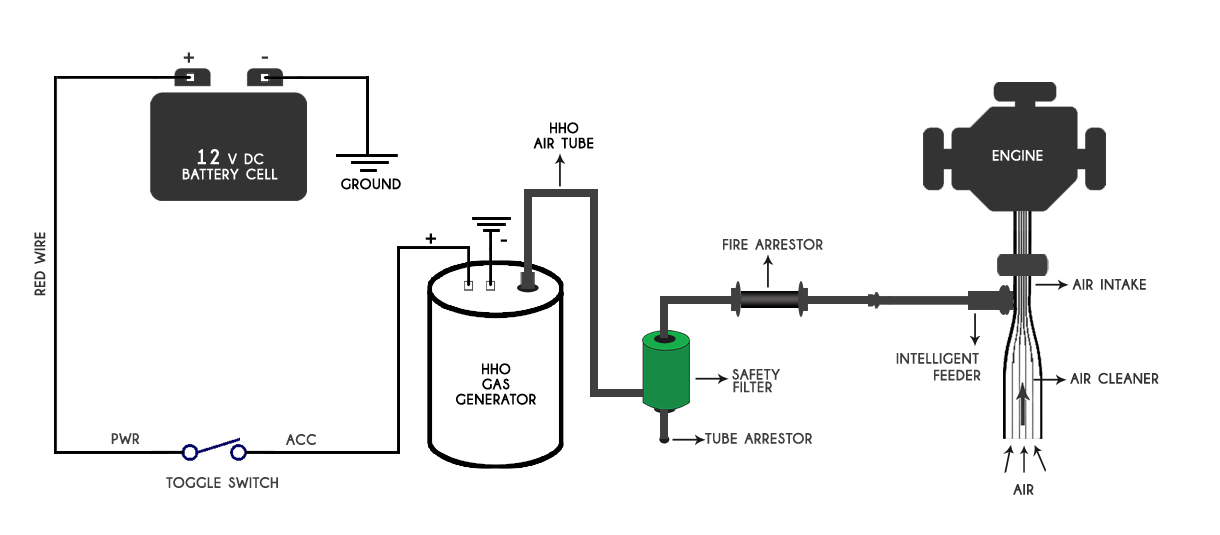Nitro Boost® is a revolutionary device that made for buses and all engine types will help you get the maximum mileage possible from the fuel you feed. There are various other benefits built in to ensure that you and your engine are happy. Soon, you'll discover that this is the missing piece in the engine invention.
What is Nitro Boost?
With the widespread concern about increasing fuel prices, there is a strong need to get most out of the fuel in order to consume less non-renewable energy/fuel. In other words, we need our engines to be more fuel-efficient. In the NitroBoost, “Electrolysis” process is used to generate HHO (Hydrogen + Oxygen) from the water solution.
In general, there are many types of products available in the market, used for increasing the vehicle mileage. Every product in the market uses one size fits all strategy to fit in the vehicle. Based on our research, the fuel economizer kit does not work that way.
The fuel economizer product (Nitro Boost) has to be built considering various parameters like Engine’s age, combustion rate, engine’s type etc. NitroBoost kit follows this approach. After a thorough research this Nitro-Boost product is developed not for a particular type of engine. NitroBoost is not a standard product as available in market. It has been designed in such a way that it can be customized for each vehicle Company type/model/year.
Since Nitro Boost is designed to be a customizable product, installing Nitro Boost and allowing the product to fit the vehicle requires minimal space and time and it is cost-efficient.
When 12 Volt DC power supply is fed to the NitroBoost, only less than 2 amps is supplied.

The NitroBoost act as an add-on to the vehicle. Many safety features have been introduced in the NitroBoost kit in order to make the kit both functional and safe to the vehicle and the end user. The safety features introduced in the NitroBoost outweighs other products in the market. Below is the safety features introduced with the kit.
There are many components built-in NitroBoost kit will ensure highest efficiency possible without impacting any of the standard engine performance.
Safety FilterHHO gas travelling through the tube might contain steam particles that need to be separated. Safety Filter helps us in filtering the steam particles from the HHO gas, hence preventing from any damage induced to the electronic components and turbo charger inside the air filter.
Fire ArresterThis component arrests fire caused by spark that may get created during the general engine operation and prevent spreading the fire to the engine or the NitroBoost device.
Intelligent FeederEngine sucks the air through the air filter. As the HHO is fed to the air filter, sometimes the engine might suck the solution from the NitroBoost device if the sucking power is very high and this might degrade the engine’s performance. Intelligent Feeder's task is to just prevent this from happening, hence providing the ultimate safety net to your engine.
Safety guidelines of NitroBoost®
The process is very safe because the combustible gas is extracted on demand and burned steadily from the water, unlike larger volumes of pure hydrogen which are highly flammable.Our NitroBoost® device produces hydrogen, as your vehicle needs it, rather than using storage tanks. It simply acts an add-on to significantly increase your fuel efficiency.
Benefits of Hydrogen Technology
- Reduces the fuel cost by increasing the mileage by 15% and it can go higher depends on the engine condition.
- Improves torque and horse power.
- Decreases the exhaust emission.
- Smoothness while riding especially while gear shifting.
- Reduces engine noise.
- Decreases engine maintenance requirements.
We have applied for patent: 1144/CHE/2014
Some Interesting words about the Hydrogen Injection Technology
Adding hydrogen to gasoline significantly increased flame speed and allows for a leaner air-fuel ratio. All emissions levels decreased at these leaner conditions.
Result of this test verifies that this technology is a viable source for reducing emissions and fuel consumption on large diesel engines.
Emissions test results indicate that a decrease of toxic emissions". Zero emissions were observed on CO (carbon oxide).
